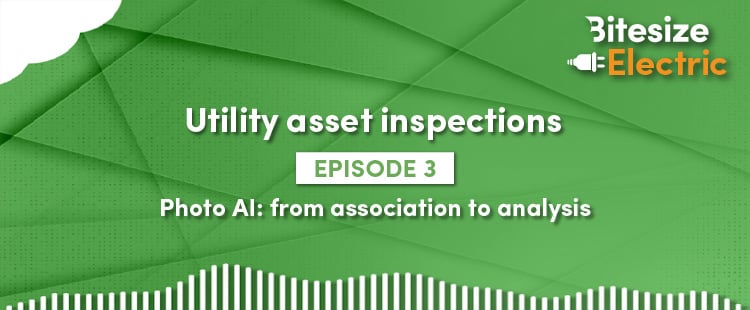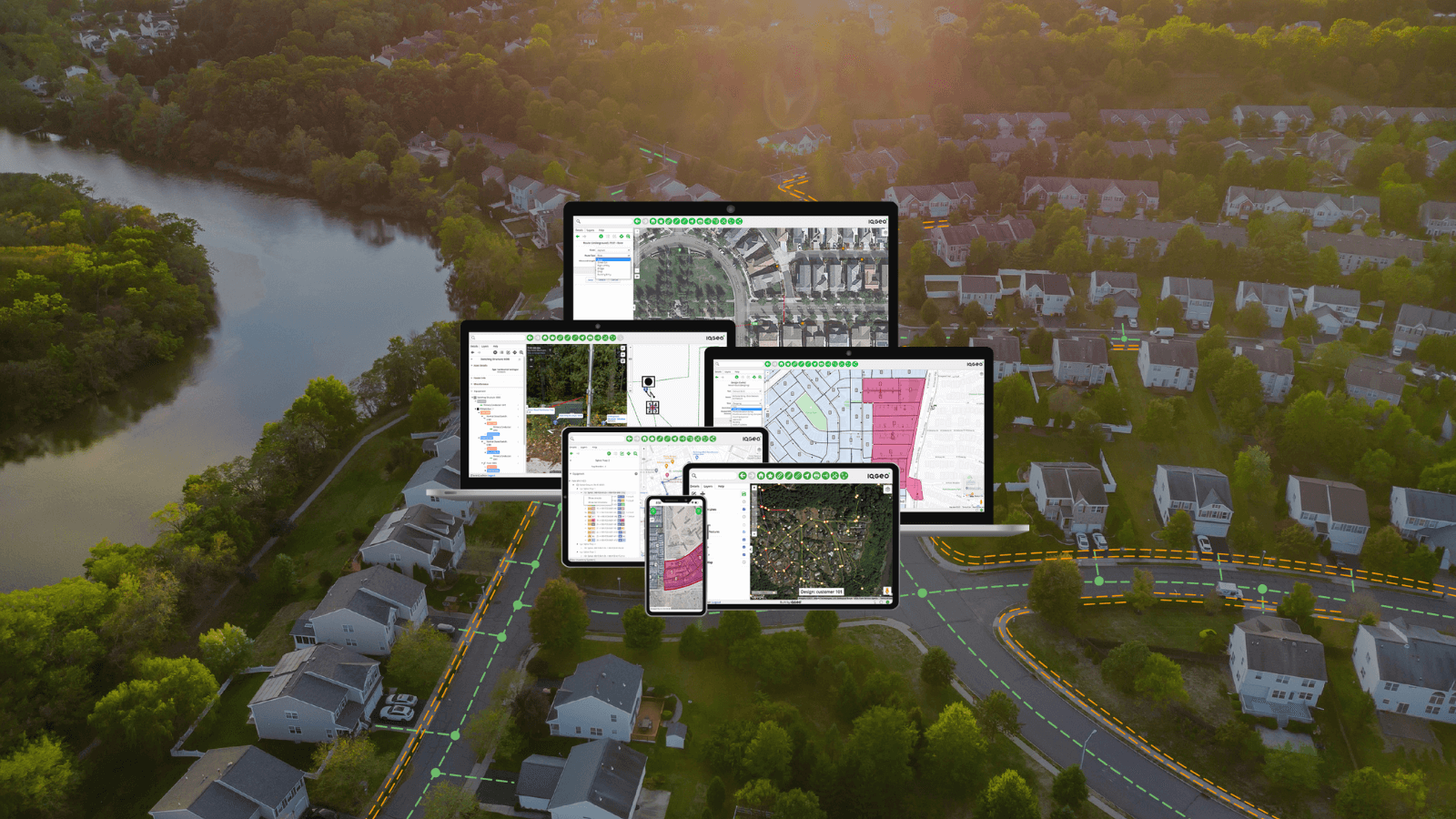Ever wondered how AI can help with fiber rollout? Whether it's reducing rework, improving data accuracy, or accelerating builds, AI is now a practical tool for operators to modernise construction workflows while improving the bottom line.
Following insights from Episode 4 of our Bitesize Fiber “Network Construction” podcast series "AI without the overload", here is a look at how AI can help fiber operators overcome these challenges and improve network construction and operations.
The importance of accurate digital twins in fiber construction
A critical element in efficient fiber network construction and operations is maintaining an accurate, up-to-date digital twin. AI in the field ensures every trench, pole, and splice update is captured, validated, and synchronised instantly with the digital twin. This accurate representation becomes the foundation for strategic and operational decisions, enabling better upgrade planning, predictive maintenance, and network investment prioritisation.
1. The hidden cost of manual, fragmented processes
Too often, fiber operators rely on manual processes and disconnected systems that slow down projects and create inconsistencies.
Why this matters?
- Data captured in the field is often incomplete or inaccurate, leading to rework.
- Manual workflows slow down approvals and validations.
- Siloed systems prevent teams from accessing real-time updates, resulting in discrepancies between design plans and as-built records.
Best practice: AI-powered field data capture and validation
Use AI with computer vision to capture images of trenches, poles, and cabinets while automatically validating dimensions and compliance with design standards.
Enable field teams to receive instant feedback and correct issues before leaving the site.
Integrate AI-validated data seamlessly into systems of record to maintain an accurate, living digital twin.
2. Transforming documentation and compliance with AI
As Greg Ross shared in Bitesize Fiber Episode 4, AI transforms how as-built data is captured, ensuring records are accurate, geo-tagged, and consistent across teams.
Why this matters?
- Accurate as-builts are essential for future upgrades and expansions.
- Safety compliance is critical for crew protection and regulatory adherence.
- Poor documentation increases the risk of billing disputes and delays.
Best practice: automated, AI-validated documentation
Use AI to extract asset attributes automatically from field photos.
Validate PPE and safety compliance using AI to create an audit-ready compliance record.
Automatically synchronise documentation with network systems to support operations and maintenance.
3. AI for fiber construction subcontractor management and billing
Stefan Schneider highlighted how AI can identify task delays and financial risks, helping operators manage projects proactively.
Why this matters?
- Tracking subcontractor productivity and quality can be challenging.
- Manual billing processes are prone to disputes due to inconsistent data.
- Lack of visibility into subcontractor performance can lead to unnecessary costs and delays.
Best practice: automated tracking and billing with AI
Use AI to track task completion, productivity, and quality scores across vendors.
Automate billing calculations using AI-driven data from 3D scans and photo evidence, reducing disputes and payment delays.
Enable subcontractors to get paid faster by using AI-validated proof of work completed to the right standard, building trust and improving cash flow across projects.
4. Enabling smarter, predictive fiber operations
AI's real value is in transforming data into actionable insights for proactive decision-making.
Why this matters?
- Without AI, operators risk missing early warning signs of potential faults or inefficiencies.
- Field teams need insights, not raw data, to make fast, informed decisions.
- Predictive maintenance is only effective with accurate, up-to-date operational data.
Best practice: AI-powered operational insights
Leverage AI to predict potential issues using historical trends and real-time data.
Use AI-driven recommendations to prioritize maintenance and dispatch, reducing unnecessary truck rolls.
Continuously refine predictive models using live data from the digital twin for operational accuracy.
The future of AI in telecom
As discussed in Episode 4, the future of AI in telecom construction will be conversational and field-first, enabling easier search, update, and documentation while reducing manual work for field teams.
Telecom operators that embrace AI-powered workflows will benefit from:
- Faster, more accurate rollouts with fewer reworks.
- Lower operational costs through reduced delays and disputes.
- Improved safety and compliance with automated validation.
- Better vendor accountability and transparency.
Faster subcontractor payments and stronger partnerships through AI-validated work evidence.
By leveraging AI, fiber operators can transform network construction and operations from a cost center into a strategic advantage. To learn more, tune into " AI without the overload " Episode 4 below and explore how AI can help you build smarter networks for the future.
Ready to see how AI can transform your fiber rollout strategy? Explore how IQGeo’s proven geospatial network management software can help your team leverage AI, streamline operations, and deliver measurable business outcomes.

Product Manager, IQGeo
Similar articles:


 Previous
Previous







